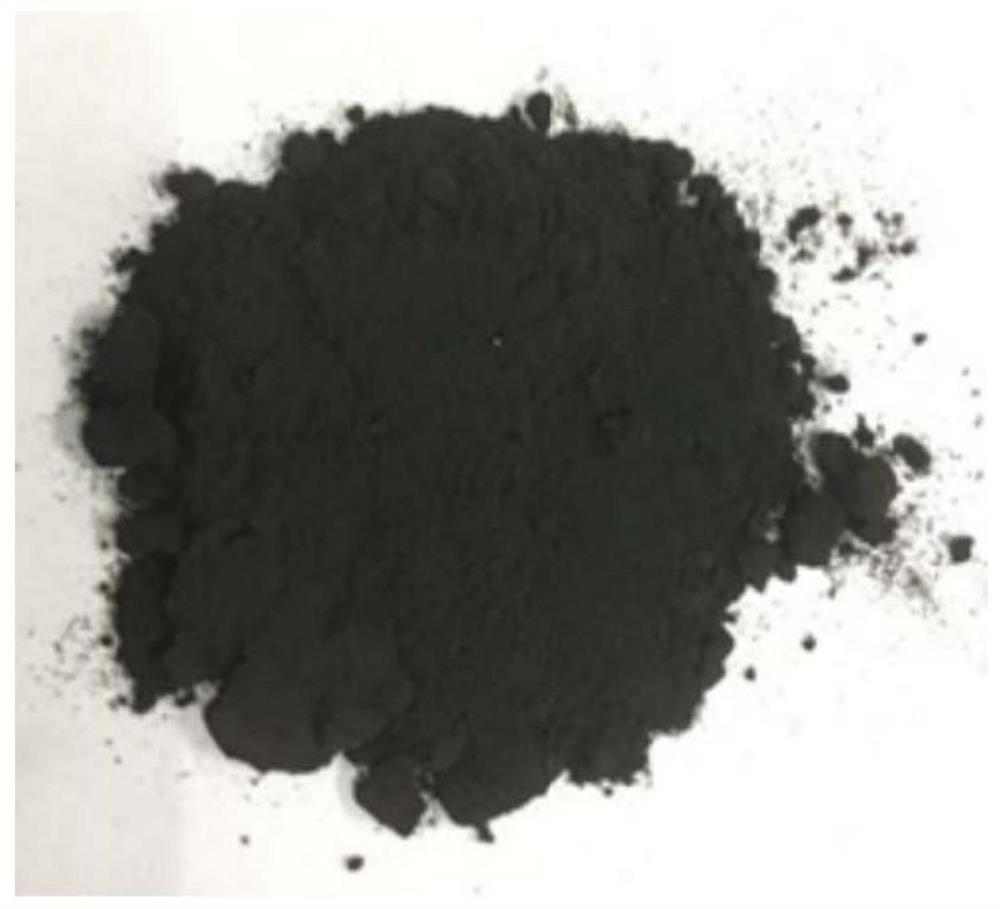Iron-carbon filler containing nano treatment unit and preparation method thereof
A technology of iron-carbon filler and treatment unit, which is applied in the direction of metallurgical wastewater treatment, water/sewage treatment, chemical instruments and methods, etc. It can solve the problems of limitation, low current density in the sewage treatment process, and limited improvement of sewage treatment efficiency. , to achieve the effects of reducing toxicity, good effluent quality, simple preparation process and environmental protection
- Summary
- Abstract
- Description
- Claims
- Application Information
AI Technical Summary
Problems solved by technology
Method used
Image
Examples
Embodiment 1
[0043] Preparation of iron carbon filler I
[0044] Step 1, 20 parts by weight of high-concentration iron-containing solution (iron ion concentration is 25000ppm), 10 parts by weight of lignin, 3 parts by weight of hydrogen peroxide and 1 part by weight of cobalt chloride are mixed, and then heated at a temperature of 60°C Fully carry out aeration reaction under 2 hours;
[0045] Step 2, adjust the pH to 3.0, then put in 0.1 parts by weight of titanic acid, and continue the reaction for 2 hours;
[0046] Step 3, after standing and settling for 6 hours, obtain a solid mixture through solid-liquid separation;
[0047] Step 4, the obtained solid mixture was dried at 65° C. for 12 hours, and then pulverized into 325-mesh particles by sieving;
[0048] Step 5, the particles obtained in step 4 are placed in a muffle furnace, baked at 180°C for 30 minutes under a nitrogen atmosphere to remove residual moisture, and then reacted in vacuum at 700°C for 2 hours; and
[0049] In ste...
Embodiment 2
[0056] Preparation of Fe-Carbon Filler II
[0057] Step 1, 18 parts by weight of high-concentration iron-containing solution (iron ion concentration is 25000ppm), 12 parts by weight of lignin, 4 parts by weight of hydrogen peroxide and 1 part by weight of cobalt chloride are mixed, and then heated at a temperature of 60 ° C. Fully carry out aeration reaction under 2 hours;
[0058] In step 2, adjust the pH to 3.0, then add 0.15 parts by weight of titanic acid, and continue the reaction for 2 hours;
[0059] Step 3, after standing and settling for 6 hours, obtain a solid mixture through solid-liquid separation;
[0060] Step 4, the obtained solid mixture was dried at 55° C. for 12 hours, and then pulverized into 300-mesh granules by sieving;
[0061] Step 5, the particles obtained in step 4 are placed in a muffle furnace, baked at 200°C under a nitrogen atmosphere for 30 minutes to remove residual moisture, and then reacted in vacuum at 800°C for 2 hours; and
[0062] Step...
Embodiment 3
[0069] Preparation of Fe-Carbon Filler III
[0070] Step 1, 20 parts by weight of high-concentration iron-containing solution (iron ion concentration is 30000ppm), 10 parts by weight of lignin, 5 parts by weight of hydrogen peroxide and 1 part by weight of nickel chloride are mixed, and then heated at a temperature of 50 ° C fully carry out the aeration reaction for 3 hours;
[0071] In step 2, adjust the pH to 3.0, then add 0.2 parts by weight of titanic acid, and continue the reaction for 2 hours;
[0072] Step 3, after standing and settling for 6 hours, obtain a solid mixture through solid-liquid separation;
[0073] Step 4, the obtained solid mixture was dried at 60° C. for 12 hours, and then crushed into 200-mesh granules by sieving;
[0074] Step 5, the particles obtained in step 4 are placed in a muffle furnace, baked at 200°C for 30 minutes under a nitrogen atmosphere to remove residual moisture, and then reacted in vacuum at 750°C for 2 hours; and
[0075] Step 6...
PUM
| Property | Measurement | Unit |
|---|---|---|
| particle size | aaaaa | aaaaa |
| turbidity | aaaaa | aaaaa |
Abstract
Description
Claims
Application Information
 Login to View More
Login to View More - R&D
- Intellectual Property
- Life Sciences
- Materials
- Tech Scout
- Unparalleled Data Quality
- Higher Quality Content
- 60% Fewer Hallucinations
Browse by: Latest US Patents, China's latest patents, Technical Efficacy Thesaurus, Application Domain, Technology Topic, Popular Technical Reports.
© 2025 PatSnap. All rights reserved.Legal|Privacy policy|Modern Slavery Act Transparency Statement|Sitemap|About US| Contact US: help@patsnap.com


